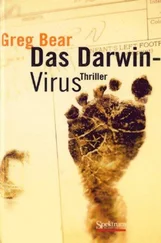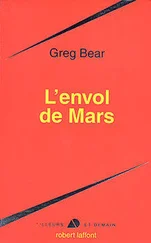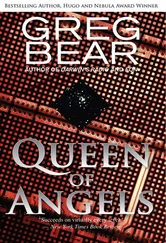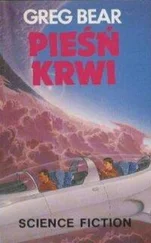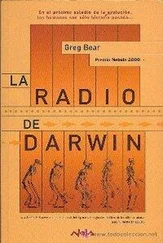ERV or endogenous retrovirus:virus that inserts its genetic material into the DNA of a host. The integrated provirus lies dormant for a time. ERVs may be quite ancient and fragmentary and no longer capable of producing infectious viruses.
Exogenous virus:virus that does not insert its genes into host DNA on a long-term basis. Some viruses, such as MMTV or mouse mammary tumor virus, seem to be able to choose whether to insert or not insert their genetic code into host DNA. See ERV.
Exon:region of DNA that codes for proteins or RNA.
Frithing:also, flehman. Sucking air over the vomeronasal organ to detect pheromones. See vomeronasal organ .
Gene:the definition of a gene is changing. A recent text defines a gene as “a segment of DNA or RNA that performs a specific function.” More particularly, a gene can be thought of as a segment of DNA that codes for some molecular product, very often one or more proteins or parts of proteins. Besides the nucleotides that code for the protein, the gene also consists of segments that determine how much and what kind of protein is expressed, and when. Genes can produce different combinations of proteins under different stimuli. In a very real sense, a gene is a tiny factory and computer within a much larger factory-computer, the genome.
Genome:sum total of genetic material in an individual organism. In humans, the genome appears to consist of approximately thirty thousand genes—half to one-third the number predicted at the time of the publication of Darwin’s Radio .
Genotype:the genetic character of an organism or distinctive group of organisms.
Glycome:the total complement of sugars and related compounds in a cell. Sugars can form links with proteins and lipids to make glycoproteins and glycolipids.
Herpes:HSV-1 or -2. Herpes simplex virus types responsible for cold sores and genital herpes. Though herpes viruses are not retroviruses they can lie dormant in nerve cells for years, and often reactivate in response to stress. Chicken pox and its recurrent form, shingles, or herpes zoster, are also related to herpes.
HERV:human endogenous retrovirus. Within our genetic material are many remnants of past infections by retroviruses. Some researchers estimate that as much as one third of our genetic material may consist of old retroviruses. No instance is yet known of these ancient viral genes producing infectious particles ( virions ) that can move from host to host, in lateral or horizontal transmission. Many HERV do produce viruslike particles within the cells and body, however, and whether these particles serve a function or cause problems is not yet known. All HERV are part of our genome and are transmitted vertically when we reproduce, from parent to offspring. Infection of gametes by retroviruses is the best explanation so far for the presence of HERV in our genome. ERV, endogenous retroviruses, are found in many other organisms, as well.
Homo erectus:general classification for fossils of the genus Homo dated chronologically and evolutionarily prior to Homo sapiens . Homo erectus was a very successful human species, surviving for at least a million years. Calling any of these fossils “ancestral” is problematic both scientifically and philosophically, but it’s a simple and easily understood description of a complex relationship. There are many interpretations of these relationships in the literature, but growing sophistication in genetics will probably lead to a general shaking out and clarification over the next ten to twenty years.
Immune response (immunity, immunization):the provoking and marshaling of defensive cells within an organism to ward off and destroy pathogens, disease-causing organisms such as viruses or bacteria. Immune response may also identify nonpathogenic cells as foreign, not part of the normal body complement of tissues; transplanted organs cause an immune response and may be rejected. Autoimmune diseases such as multiple sclerosis and various forms of arthritis may occur or reoccur in response to viral activation due to stress. In humans, ERV activation has been suggested as a cause of some autoimmune diseases.
Intron:region of DNA that generally does not code for proteins. In most eukaryotic cells, genes consist of mingled exons and introns. Introns are clipped out of transcribed messenger RNA (mRNA) before it is processed by ribosomes; ribosomes use the code contained in lengths of mRNA to assemble specific proteins out of amino acids. Bacteria lack introns.
Lipids:organic compounds such as fats, oils, waxes, and sterols. Lipids make up many of the structural components of cells, including much of the cell wall or membrane.
Lipome:the total complement of lipids within a cell. Lipids may also form alliances with sugars and proteins (see glycome and proteome ).
Mitochondrion, mitochondria:organelles within cells that process sugars to produce the common fuel for cells, adenosine triphosphate, or ATP. Generally regarded as highly adapted descendants of bacteria that entered host cells billions of years ago. Mitochondria have their own loops of DNA constituting a separate genome within every cell. Mitochondrial DNA, being shorter and simpler, is often the target of choice for fossil analysis.
Modern human: Homo sapiens sapiens. Genus Homo, species sapiens, subspecies sapiens. Homo sapiens sapiens could be read as “Man who is wise, who knows.” Also, “Man who is discreet, who savors.”
Mobile element:movable segment of DNA. Transposons can move or have their DNA copied from place to place in a length of DNA using DNA polymerase. Retrotransposons contain their own reverse transcriptase , which gives them some autonomy within the genome. Mobile elements have been shown by Barbara McClintock and others to generate variety in plants; but some believe these are, more often than not, so-called selfish genes which are duplicated without being useful to the organism. More and more, geneticists have found strong evidence that mobile elements contribute to variation in all genomes and help to regulate both embryonic development and evolution.
Mutation:alteration in a gene or segment of DNA. May be accidental and unproductive or even dangerous; may also be useful, leading to the production of a more efficient protein. Mutations may lead to variation in phenotype, or the physical structure of an organism. Random mutations are usually either neutral or bad for the health of the organism.
Neandertal: Homo sapiens Neandertalensis. Possibly ancestral to humans. Modern anthropologists and geneticists are currently engaged in a debate about whether Neandertals are our ancestors, based on evidence of mitochondrial DNA extracted from ancient bones. More than likely, the evidence is confusing because we simply do not yet know how species and subspecies separate and develop.
Pathogen:disease-causing organism. There are many different varieties of pathogen: viruses, bacteria, fungi, protists (formerly known as protozoa), and metazoans such as nematodes.
PERV:Porcine endogenous retrovirus. Ancient retroviruses found in the genome of pigs. See ERV.
Phage:a virus that uses bacteria as hosts. Many kinds of phages kill their hosts almost immediately and can be used as antibacterial agents. Most bacteria have at least one and often many phages specific to them. Phages and bacteria are always in a contest to outrun each other, evolutionarily speaking.
Читать дальше
Конец ознакомительного отрывка
Купить книгу

